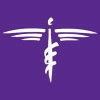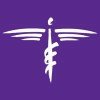
Herbal treatments could interfere with your prescription meds
Because the use of herbal treatments is at an all-time high – 33% of adults in the United States use one or more herbal health treatments – it is important to recognize the danger of drug interactions with herbs. Perhaps the fact that herbal medicines are derived from plant sources contributes greatly to their widespread use. Many believe that plants and anything derived from them are relatively safe to use in comparison to any industrially- manufactured drug. That is not true.
“Quite frequently these days it is common to find individuals supplementing or substituting their prescribed medications with herbal products; often without consulting a health care practitioner,” explained , professor of physiology and pharmacology at Des Moines University. “This poses significant health risks since, despite the publicly perceived safe nature of plant products, there are many well-known and well-described harmful herb-drug interactions.”
Mortensen says interactions are under reported and underestimated because many patients do not tell their health care practitioner what they are taking. Some of the most common drug-herb interactions occur with the following medications:
- anti-coagulants (warfarin, aspirin and phenprocoumon)
- sedatives and anti-depressants (midazolam, alprazolam and amitriptyline)
- anti-HIV agents (indinavir, ritonavir and saquinavir)
- oral contraceptives
- cardiovascular drug (digoxin)
- immunosuppressants (cyclosporine and tacrolimus)
- anti-cancer drugs (imatinib and irinotecan)
Many of the interactions involve how the drug is absorbed, metabolized and eliminated. In other words, taking herbal supplements can change how long your medication stays active in the body, explained Mortensen.
As with any other medical treatment, herbal supplements or remedies should not be taken without first consulting a health care practitioner about dosage, preparation, age, health and gender.
“Frank and open discussions between a patient and health care provider are necessary in order to make an informed and healthy decision when considering the replacement of a prescribed medication or use of an herbal preparation with a prescribed drug,” Mortensen added.
Taking herbal products while on the pill?
One common medication that can be affected by simultaneous herbal usage is the birth control pill.
Luke Mortensen, Ph.D., professor of physiology and pharmacology at Des Moines University, said, “For example, the use of St. John’s wort greatly reduces the normal blood concentration of the oral contraceptive such that it reduces its effectiveness. Other medications with this same effect include barbiturates, antibiotics, anti-fungal or tuberculosis drugs.”
, professor of family medicine at Des Moines University, explained that it would take several months of St. John’s wort (at recommended doses) to interfere. And, she said, it also would take several weeks for the body to clear St. John’s wort out of the body before the pill would be safe to use without backup.
Use of garlic or saw palmetto while on an oral contraceptive can increase bleeding time. Also, Mortensen said, using licorice or grapefruit juice can increase the blood concentration of the contraceptive, which leads to an adverse effect. A combination of oral contraceptives and caffeine can elevate blood pressure and anxiety.
“Such information is severely lacking to the public and should be recognized due to the potential of decreased therapeutic effectiveness and safety,” he said.
Of course there are also well-known prescription drugs that can interfere with the contraceptive’s effectiveness.
Dr. Wattleworth said, “The penicillin group is notorious for interfering with action of the pill, and most anti-convulsants cause reduced action of the pill, so any woman with seizures should use another form of contraception.”
To prevent interaction, she said, use backup protection if you begin the antibiotic during the first week of a pill pack until you have a period. If you start the antibiotic mid-pill pack, there’s less chance of interaction but secondary protection is still recommended.

